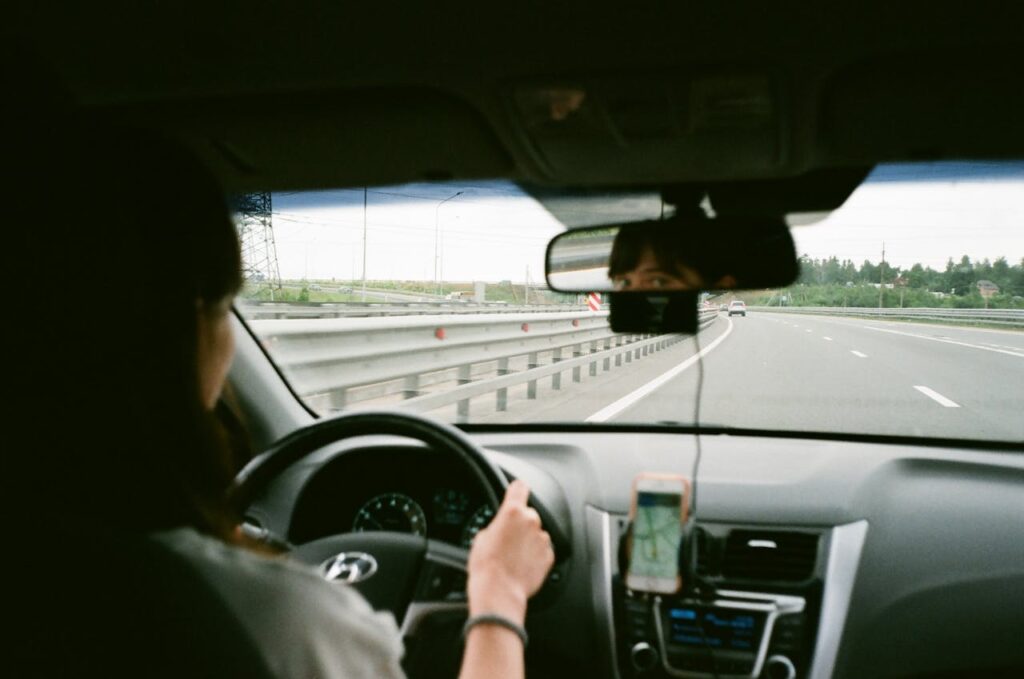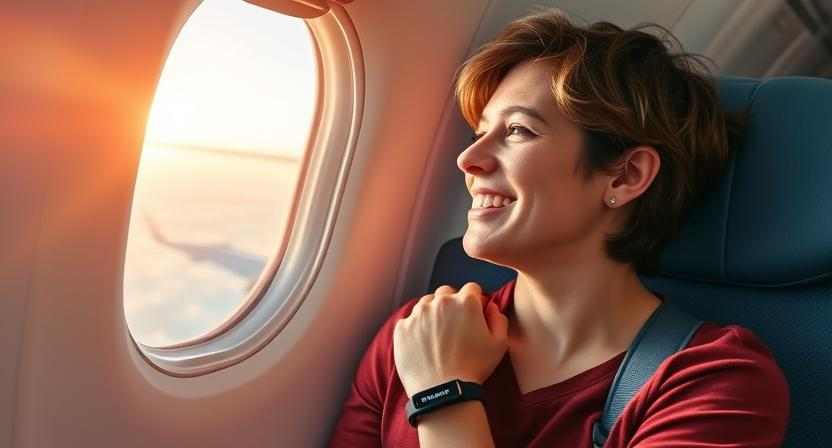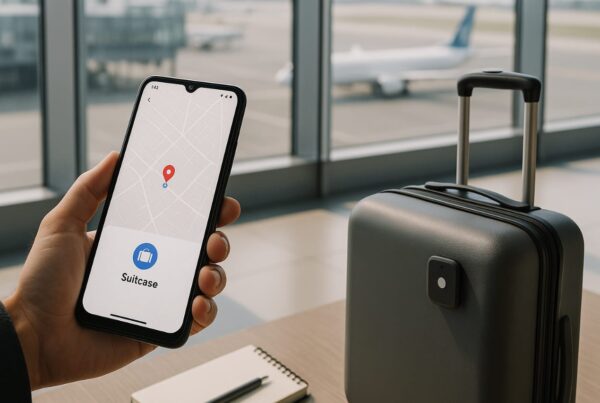That unsettling wave of dizziness. The rising nausea. The cold sweat that creeps in just before you know you’re in trouble. Motion sickness can turn what should be an exciting adventure into a miserable ordeal. If you’ve struggled with this before, you know how frustrating it can be, especially when you’re on a long flight, car ride, or cruise. But there’s hope.
With the right techniques and a reliable motion sickness bracelet, you can stay calm, comfortable, and nausea-free. In this guide, you’ll learn how to prevent motion sickness, explore effective products like motion sickness bands and motion sickness glasses, and discover additional tips to ensure you enjoy your travels without discomfort.
A Simple Bracelet Saved My Travels

When I was a teenager, traveling was a disaster for me. Even a short 50-mile trip felt impossible because I’d end up sick every time. No matter what I tried, ginger, breathing tricks, even staring at the horizon, nothing worked. Eventually, my parents stopped taking me on long trips, and while they explored new places, I stayed home like some forgotten houseplant.
Years later, I found myself on a 2000 km train journey. The guy sitting beside me had a strange bracelet on his wrist. Curious, I asked what it was. “Motion sickness bracelet,” he said casually, like it was common knowledge. My mind was blown. At the next station, I jumped off the train, rushed to a store, and bought one.
That was eight years ago. Since then, I have never travelled without my trusty bracelet. No more nausea, no more headaches, just smooth, puke-free journeys!
What is Motion Sickness?
Why some people experience motion sickness while others don’t isn’t entirely clear. Experts believe it happens when your body’s senses send mixed signals to your brain. Imagine sitting in the backseat of a car, reading a book. Your eyes see the words on the page, suggesting stillness, but your inner ear detects motion as the vehicle moves. This mismatch confuses your brain, leading to unpleasant symptoms like:
- Dizziness
- Headache
- Nausea
- Excessive saliva
- Sweating
- Belching
- A sudden awareness of your stomach
- Vomiting
- Fast, shallow breathing (in extreme cases)
The same thing happens on boats, planes, and theme park rides. It’s your body’s way of warning you that something feels “off,” even when you’re perfectly safe.
Medications can help manage these symptoms, but if you’re hoping to prevent motion sickness altogether, here are some useful techniques to try.
Recommended Products: Choose Your Perfect Solution
Before we even get into remedies, I want to make you check out these products. I personally use them on every trip because I tend to get motion sickness too, with headache, nausea, and vomiting. If you are going through the same, you have got to try these!
(a) Budget: Sea-Band Anti-Nausea Wristbands (~$7–$10)
Sea-Band anti-nausea wristbands are an easy and great solution for the low-price traveler. Acupressure points act upon the inner wrist P6.
1. Nausea Relief Naturally with Motion Sickness Bands
Sea-Band motion sickness bracelet aids in the imposition of acupressure on the P6 point (Nei Kuan) on the wrist, giving you a natural remedy for nausea caused by travel, morning sickness, or chemotherapy. These motion sickness bands are drug-free, thus safe for usage by adults and children alike.
2. Comfortable and Reusable for Years
Sea-Band motion sickness bracelets are washable and reusable, thus designed for years and comfort. Are you ready for those Sunday road trips, four-day cruises, or red-eye flights? Its simple yet effective design has made this an inevitable travel companion.
3. Gentle Yet Effective Relief for Motion Sickness
Inspired by traditional remedies, Sea-Band motion sickness bands allow for naturally derived relief without any of the side effects of the ingredients that cause dizziness or mental fog. They give soothing relief whether you’re in a foreign land or dealing with everyday nausea.
(b) Mid-Range Solution: Dramamine Motion Sickness Relief (~$10–$15)
Dramamine Motion Sickness Relief is a trusted solution for more serious cases of nausea. It is formulated to provide relief while remaining non-drowsy, working quickly and making it ideal for long trips.
1. Reliable Relief Besides Motion Sickness Bands
When it comes to minor relief, motion sickness bands and motion sickness glasses can work, but Dramamine Motion Sickness Original tablets deliver a solid bang of trusty and fast-acting relief-from severe nausea, dizziness, and vomiting-just what you need when these symptoms turn up without warning and lay a claim to your travel comfort.
2. Most Recommended At The Pharmacy
If motion sickness bands don’t provide enough relief, Dramamine is a respected pharmacy choice for ultimate relief from motion discomfort. Whether in a travel vial or a bottle, Dramamine is a true game changer when mishaps become unavoidable.
3. Dramamine adds extra assurance
That regardless of what method you’re using-whether motion sickness bracelets, motion sickness glasses, or a combination-Dramamine will prevent your trip from being smooth and free from nausea.
(c) Premium Choice: Reliefband Classic Anti-Nausea Wrist Device (~$60–$80)
The Reliefband Classic Anti-Nausea Wrist Device uses precise electrical pulses to stimulate the median nerve, directly targeting nausea signals.
1. Powerful Support Beyond Motion Sickness Bands
While motion sickness bands and motion sickness glasses can ease discomfort, the Reliefband Classic offers fast-acting relief with advanced technology that normalizes nerve signals, providing comfort without medication.
2. A Drug-Free Alternative to a Motion Sickness Bracelet
With an impressive 85% success rate in clinical trials, the Reliefband Classic is an FDA-cleared wearable that offers natural relief when traditional motion sickness bands or motion sickness glasses may not be enough.
3. Reliable for Long Journeys
Unlike typical motion sickness bracelets, the Reliefband Classic offers 150 hours of continuous use with adjustable intensity settings, perfect for extended travel or persistent motion sickness symptoms.
How to Prevent Motion Sickness

1. Stay in Control to Stay Well
Being a passenger does make throwing up much worse during long hours of travel in the car. Drivers suffer less from it owing to having the whole scenario in their heads, depicting where the vehicle is going and how it is going to behave at every turn. The situation is quite unlike that of the other souls who, as passengers, would be caught by surprise by movement whenever there is sudden acceleration or deceleration.
(i) Take the front seat and focus on the horizon
Sitting in the front gives a better view of the road, helping your brain sync with the car’s motion. Avoid looking at screens or reading, as that can worsen symptoms.
(ii) Use fresh air and distractions
Open a window or turn on the AC for better airflow. If you’re stuck in the back, engage in light conversation or listen to music to shift focus away from motion.
2. Curb Your Consumption
Your diet and beverages for the journey can definitely make a difference to motion sickness. Heavy or greasy or spicy food and odors may trigger nausea; in fact, overeating or drinking alcohol may worsen the symptoms.
(i) Eat light and avoid strong odors
Before you travel, eat mild, easy-to-digest foods. Spicy, fatty, or strong-smelling foods that could cause nausea should be avoided.
(ii) Limit alcohol and smoking
Excessive alcohol intake and smoking will only worsen nausea and may lead to dehydration. Drink water or herbal teas instead.
3. Get Into Position
Above all, proper positioning helps prevent motion sickness.. Certain seats are more stable than others, and the presence of sick passengers can increase your own discomfort. Proper place and some silly remedies can make your ride more enjoyable.
(i) Choose the most stable seat for a better ride
In airplanes, choose a seat around the wing area since this is where the turbulence is least felt. While on a ship, ask for a room in the lower center of the vessel to minimize movement. In a car, the front seat is preferred to ward off nausea.
(ii) Wear a motion-sickness bracelet for natural relief
These bracelets put some pressure on an acupressure point on the wrist that many believe really helps relieve nausea without the use of any medicine. This is a simple, drug-free solution to consider.
(iii) Do not look at anyone suffering from motion sickness
Nothing triggers nausea more than seeing or hearing someone vomit. If you can, move away from sick passengers, and instead focus on fresh air or conversation while distracting your mind with music.
4. Equalize Your Sensory Cues
Aligning your senses can help reduce motion sickness by preventing mixed signals between your eyes and inner ear. Simple adjustments in position and focus can make a big difference in keeping nausea at bay.
(i) Adjust your position to match movement cues
If you’re on a boat, lying down can help your body sync with the motion. On a train, choose a front-facing seat to align your visual and inner ear signals. In a car, keep your eyes on the horizon to stabilize your senses.
(ii) Use motion sickness bands for extra support
These wristbands apply pressure to an acupressure point linked to nausea relief. They’re a drug-free option that many travelers rely on for reducing symptoms during car, boat, or air travel.
5. Talk Yourself Down
Vision stabilization and nausea reduction can be aided through use of motion sickness glasses, but it is equally important that your mindset helps avoid the tension. Positive self-talk and relaxation techniques will actually work wonders.
(i) Use verbal affirmation to set expectations
Studies have shown that saying, “I won’t get carsick” can inhibit symptom perception. This mental trick, or “verbal placebo,” ensures that your brain maintains a calm state that keeps nausea at bay.
(ii) Relax by practicing controlled breathing
Learning biofeedback techniques like some deep, slow breaths could help an individual calm their body’s response to motion. Staying relaxed tends to ease dizziness and improve overall comfort during travel.
6. Get Desensitized
Desensitization therapy fits your body, which will increasingly accept motion and symptoms gradually decrease. When you put yourself through gradual exposure to such activities, it allows the brain to adapt, making travel much more pleasant.
(i) Commence with minimal controlled exposure
Engage for just a little while in activities that provoke motion sickness, such as reading in a moving car; stop when symptoms are about to get more intense.
(ii) Gradually increase the duration
After multiple sessions of short exposure, extend the time little by little. For example, move from five minutes of reading to ten, then fifteen.
(iii) Be patient and consistent
The key to desensitization is repetition. Practicing regularly in small increments will help your body adjust, making motion-related discomfort less frequent or even disappearing over time.
7. Get in Touch with Your Pressure Points
Pressure point therapy is a natural way to ease nausea and reduce motion sickness symptoms. Applying pressure to the P6 (Neiguan) point on your wrist has been shown to help many travelers feel better.
(i) Use a motion sickness bracelet for consistent relief
These bands apply steady pressure to your inner wrist, stimulating the P6 point. Studies suggest they can help reduce nausea without medication.
(ii) Massage your wrists if you don’t have a bracelet
Gently pressing the area between your tendons for a few minutes can provide similar relief. This quick technique is easy to do anytime, anywhere.
8. When All Else Fails, Medicate
Medical treatments for severe motion sickness are known to provide help. OTC medicines give the best relief when taken before symptoms start, while prescription patches could help in longer trips.

(i) Take OTC medications
Before traveling-Dramamine and Meclizine could prevent nausea, if taken 30-60 minutes before exposure to motion. Do be careful though, as those can cause drowsiness.
(ii) Consider a scopolamine patch for extended relief
If you experience prolonged motion sickness, ask your doctor about this prescription patch. It lasts for days but may cause dry mouth, dizziness, or drowsiness.
Additional Tips and Tricks
Along with well-known solutions, a little-known tip or trick can sometimes prevent movement sickness. These little changes to one’s routine, diet, or environment can end up preventing nausea.
1. Supplements in Ginger
Ginger is a natural remedy for an “unhinged” stomach and less nausea. Whether in the form of a whole capsule, powdered, tea-drunk, or gummy ginger candies, it could help in stomach soothing or dizziness and discomfort while traveling.
2. Coolant Patches
With cold patches for your forehead, there is relief from nausea and dizziness because of their fresh sensation. It may work best in a warm, stale place, where headache and nausea usually increase with motion.
3. Aromatherapy with Mints
Peppermint oil always works smoothly on the tummy. The mere inhalation of its smell or dab of it on hands can instantaneously improve comfort while on travel by calming nausea.
4. Airflow Control
Fresh air often works well in relieving nausea. If possible, open a window or step outside. Direct an air vent to your face to bring the senses back into cohesion and lessen discomfort.
5. Earplug Magic
Fitting one earplug might cut down internal noise, supplementing the sensory conflict. This trick works in a noisy place as on an airplane or during a travel journey in a congested bus, where overstimulation readily initiates motion sickness.
Final Thoughts
Life is full of adventures that should not be marred by motion sickness. A little preparation can go a long way for road-trippers, cruisers, or flyers. Use methods that suit you, like proper seating, a controlled diet, and products like a motion sickness bracelet, to shield yourself from discomfort. Try solutions such as motion sickness bands or motion sickness glasses, as well as medically advanced alternatives like the Reliefband. Hold back nothing; take charge, travel with confidence, and enjoy every journey without the fear of motion sickness dragging you down.




